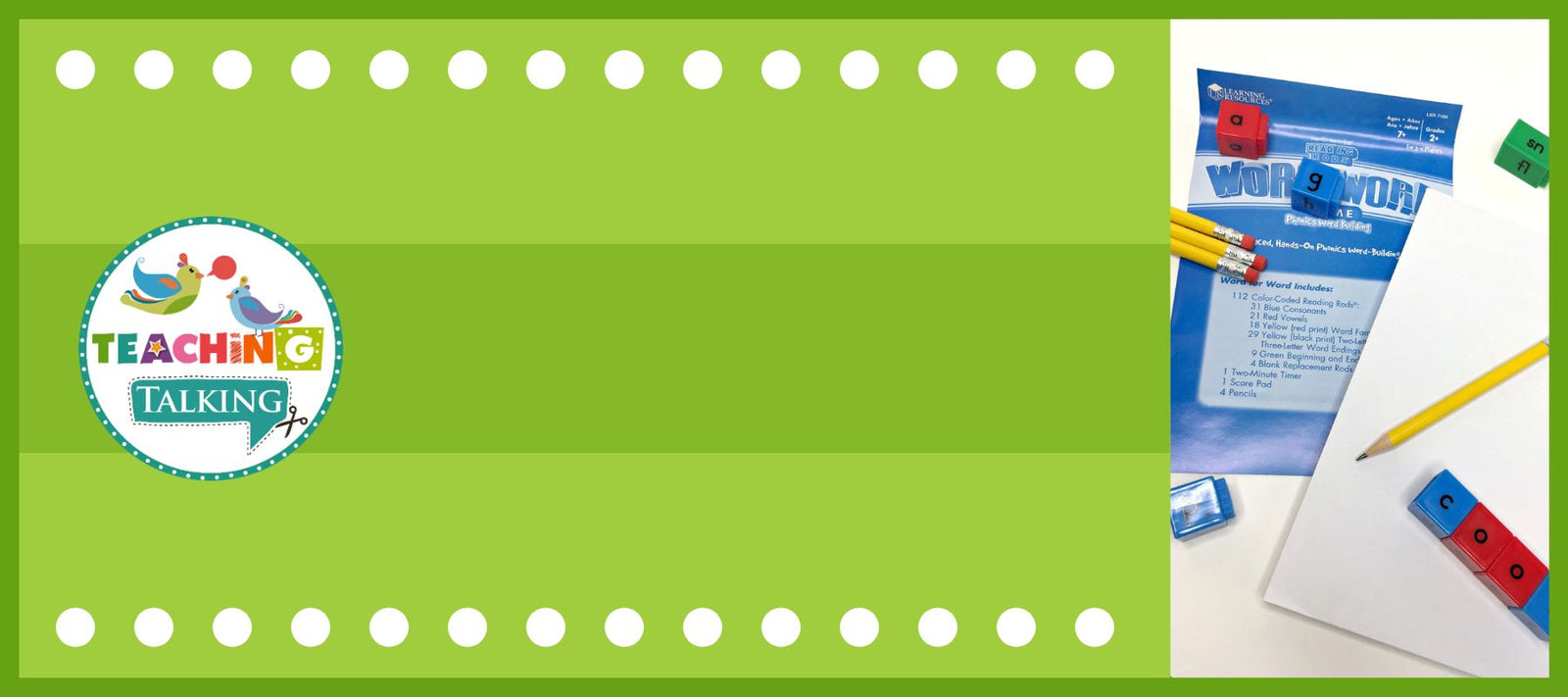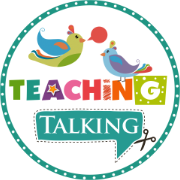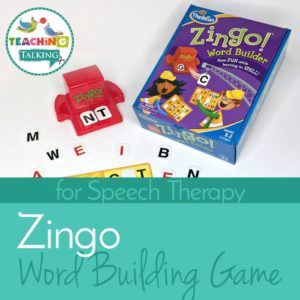
Word for Word Phonics Game for Speech Therapy
April 14, 2015 3 min read
The Word for Word Phonics Game is great word-building fun for those learning to read.

Number of Players: 2 – 4
Ages: 7 +
Target: Develops word-building skills and phonological awareness
How the Word for Word Phonics Game is Played
The Word for Word Phonics Game is a super variation on classic word games like Scrabble and Boggle. Coming from a company like Learning Resources you would expect it to be designed for education and it is but it doesn’t lose the fun factor.
The box contains over 100 color-coded “reading rods”. These are like large single Lego bricks with various letter combinations printed on them. They interlock to allow your child to build words.

The color coding allows you to easily set the level of the activity by selecting the correct blocks.
For example, you can keep things basic and build simple three letter words by using the blue consonant blocks in combination with the red vowels.
Step it up a level by adding blocks with two and three letter word endings (such as ine, ound, eel and ake) to the blue consonant blocks. There are five levels of play altogether making for lots of challenging variations.
The sturdy box set comes with enough blocks for a group of 4 children to play easily together.
There are clear instructions, a timer, scorecard, and pencils.

If played correctly, the object of the game is to make as many words as you can in two minutes and write them on the pad.
I find my stronger students enjoy playing this game as it was designed but I find it an invaluable kit for all sorts of phonological awareness and early literacy activities with younger or less able kids.
The reading rods (or a similar equivalent) also come in larger jars designed as classroom sets but I find it hard to beat this set for home or clinic use for variety and value for money.
Using the Word for Word Phonics Game in Speech Therapy
A big part of a Speech Therapist’s work with children who have difficulties in clear pronunciation is to make sure they are hearing the sounds right.
There are a variety of ways to do this and it depends on the age of the child. You may have your own system but generally, we SLPs will teach younger children to use a certain picture to represent a sound.
For example, we may show them that a picture of a ball says “b” and a drum says “d”. We will then say one of the sounds and ask them which one they heard. I always like to go as far as I can with this early listening or “phonological awareness” work because I believe it lays a great foundation, not only for speech work, but for later literacy.

The reading rods that come as part of the Word for Word Phonics Game are part of my strategy for developing phonological awareness in older kids. It moves them from just being aware of the phoneme (sound) to being able to link it to its representative letter form (called a grapheme) and bridges the gap between sounds and spelling ability.
Some simple uses of the kit include:
- Matching rhyming pairs or making word families that rhyme
- Filling in the blank sound - “Find me the sound I need to add to make it say cake”
- Switching sounds - ”This says cat. What should I do to make it say fat?”

For children who aren’t yet able to build three-letter words with ease – try a more basic game such as the What’s Gnu? Game (also called Zingo).
Now you know all there is to know about using the Word for Word Phonics game for Speech Therapy – are you ready to play? Have fun!
Subscribe
Sign up to get the latest on sales, new releases and more …




